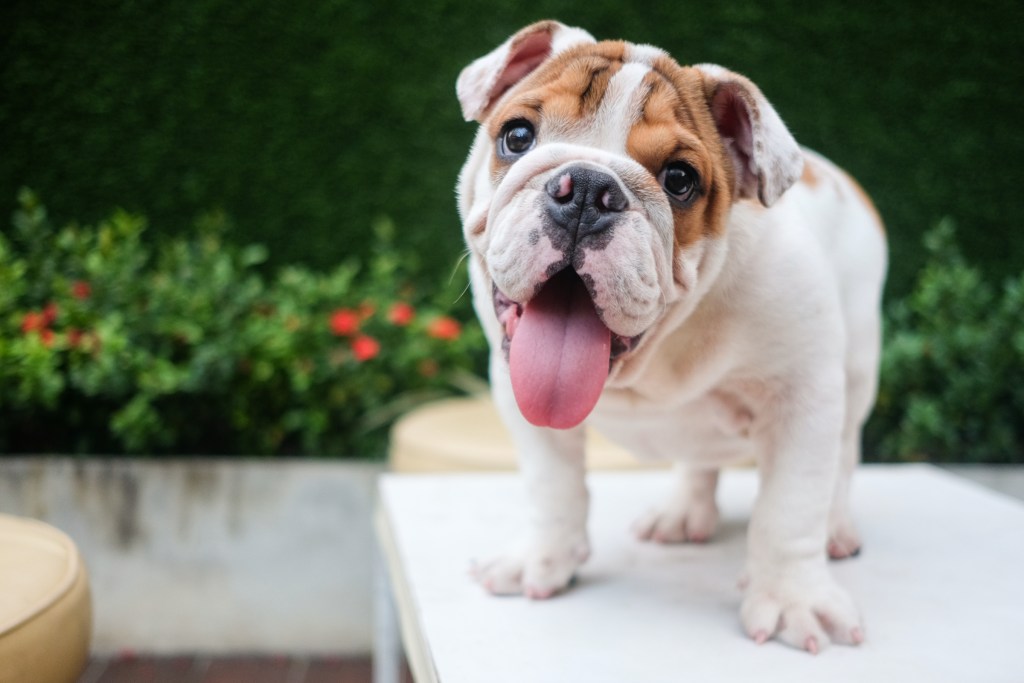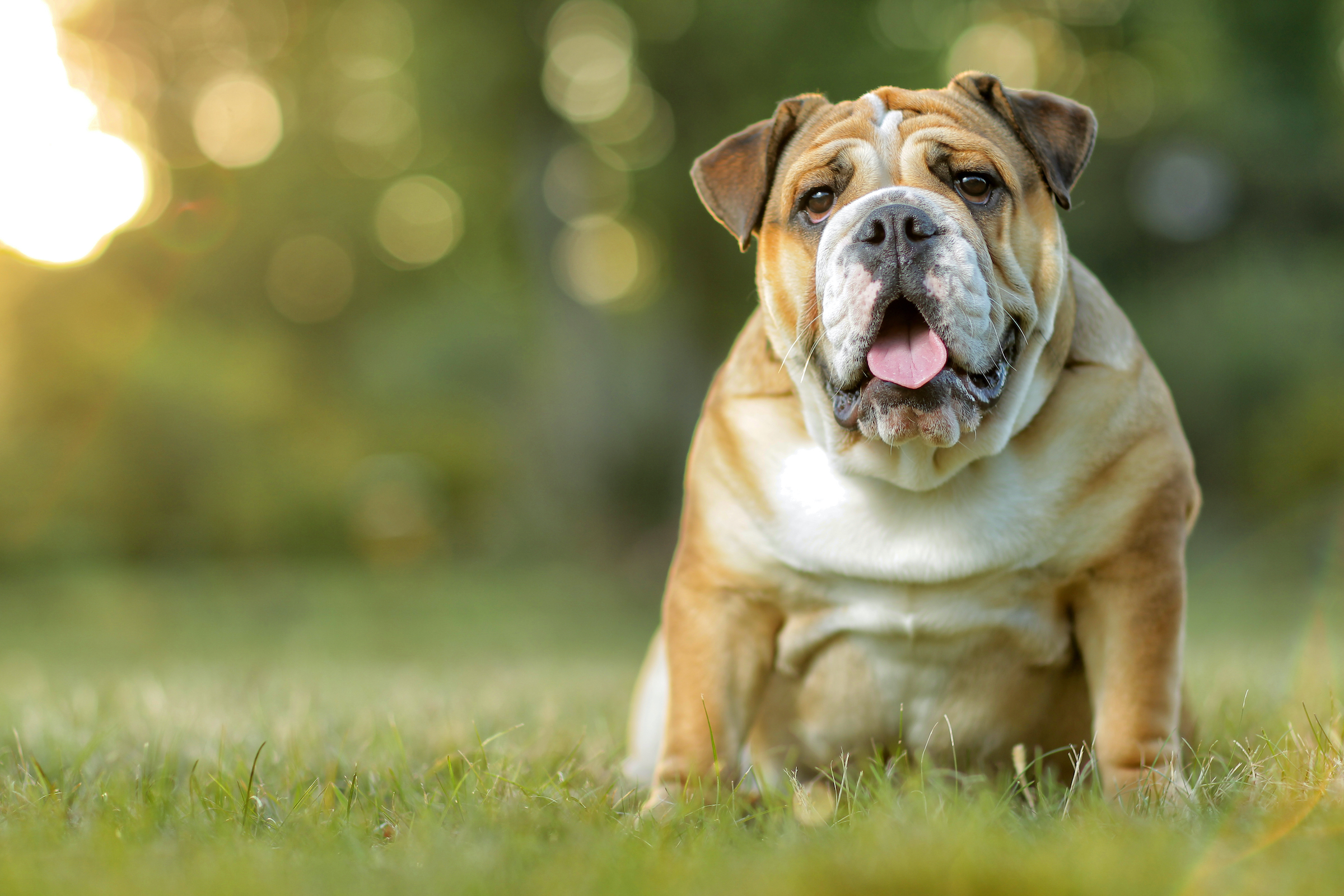When it comes to hot summer weather, any dog is better off staying cool indoors. There are ways to keep outdoor spaces comfortable as well, such as heat-resistant doghouses and a playful romp through the sprinklers, but nothing is as safe as staying hydrated and away from the midday heat.
Bulldogs are especially susceptible to heat-related illnesses like dehydration and heat exhaustion. Luckily, with some planning and thought on your part, they’ll stay just as cool as you will this summer. It doesn’t take much time, money, or effort to keep your pup chill, but he’ll appreciate it as if it cost a million bucks. The safety of your four-legged friend is priceless, after all. Here’s what you need to know about summer bulldog care.

Why your bulldog should stay inside this summer
If you think you have a hard time staying cool in the heat, consider what your pup goes through! Dogs don’t have sweat glands to help regulate temperature (and fur can be rather warm), so most dogs cool off by panting. This is just one reason why hydration during the summer is oh-so-important.
Bulldogs and other snub-nosed breeds, though, are even more heat — and humidity — intolerant. These breeds with broad heads and constricted airways are considered brachycephalic; they include Shih Tzus, bullmastiffs, boxers, and Boston terriers. Unfortunately, English bulldogs tend to be the most susceptible to heat-related breathing issues (via VCA).
Since these breeds have a hard time breathing in the first place because of their anatomy, cooling off through panting is not always effective for brachycephalic breeds. Without an efficient way to cool off, heat can be detrimental to your dog’s health — even fatal. This is why planning for the summer months is essential to your pup’s safety.
What to do with your bulldog indoors
It may seem harsh to keep your dog inside the entire summer, but staying inside doesn’t mean your furry friend has to stay bored. With a little time and TLC, you can give your pup a luxurious, comfortable place to call his own, as well as a few toys, treats, and activities to stimulate him. Don’t forget to spend quality time with your pup while you’re busy chilling!
Create a cool space for them
Every dog needs a space to call their own, whether it’s made up of a bed and a toy box or an entire room dedicated just to them. A great summer addition to any space is a cooling bed or mat to nap on, like Frisco’s Cooling Orthopedic Pillow Bed. Make sure to keep their bed in a well-ventilated area where it won’t get warm and stuffy — it can still get hot and humid indoors! Investing in a fan or two won’t hurt, either, especially if you don’t have air conditioning in your house.
Simply plopping a bed or crate on the floor won’t necessarily be enough. Your pup should have the home of his dreams, right? If your dog fancies fluffy blankets or any particular pillows, they would be a great addition, as would their favorite toys. It’s a good idea to keep your dog’s spot in a space where you’ll be around often, so he can feel like he’s part of the action, too.
Keep them active inside
How your pup spends his indoor time is just as important as what makes his space special. Treat-releasing toys are popular among pet parents since they keep your furry friend occupied for a long time, even when you’re out running errands. It’s a great idea to invest in a few different types of toys for your pup, too, so you both can get to know what he likes best. A rousing game of tug of war can be just as fun and tiring for your bulldog, especially in the summer.

How to take your bulldog outside in the summer — safely
As much as you want to keep your dog inside all summer long, potty breaks and other excursions are inevitable. It’s part of life! Thankfully, you can do a few things to keep your bulldog safe when you need to step outside.
Avoid the midday sun
The hottest part of the day is from midday to late afternoon, so you should definitely avoid taking your pup outside during these hours. Instead, take a short walk or romp around the yard in the morning or evening, when the sun isn’t beating down so harshly.
Keep potty breaks short
When your bulldog needs to take a potty break, encourage him not to beat around the bush while he’s out. Rewarding him when he does potty will help him go faster in the future, so neither of you will have to deal with the heat while your dog finds the perfect place to relieve himself.
Don’t forget to keep your four-legged friend hydrated during and after his trips outside. It’s extra important to cool down your pup when he’s been exposed to heat, even if he doesn’t show symptoms of heat exhaustion. Remember, bulldogs can’t always cool off by panting, so it’s up to you to help them stay comfy and chill. You got this!
Editors' Recommendations
- Are ‘dog years’ really 7 human years? How to calculate your dog’s age
- How to tell if your older dog’s health decline means the end is near
- My dog is shaking and acting weird – should I worry?
- Do puppies sleep a lot? These are the perfectly normal sleeping habits of a healthy pup
- Here’s how to treat a dog with itchy paws, starting with finding the cause of paw discomfort




